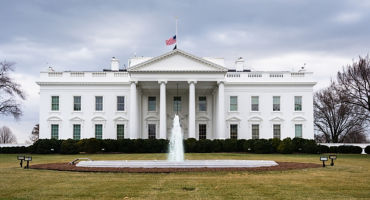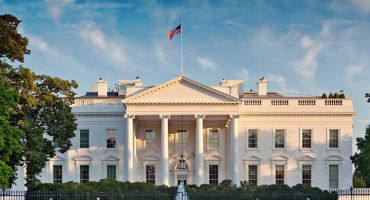Skip to main content
- Funds
- Insights
- Capabilities
- About Us
- My Account
Our Funds
Fund Documents
Global Multi-Strategy Fund
United States, Intermediary
Changechevron_rightThank you for your registration
You will shortly receive an email with your unique link to our preference center.
Global Multi-Strategy Fund
The views expressed are those of the author at the time of writing. Other teams may hold different views and make different investment decisions. The value of your investment may become worth more or less than at the time of original investment. While any third-party data used is considered reliable, its accuracy is not guaranteed. For professional, institutional, or accredited investors only.
This is the second part of my ongoing series on the geopolitical, foreign policy, and market consequences of the US presidential election, which focuses on a Biden 2.0. (Please also see Trump 2.0: National security and investment themes.)
In contrast to my Trump 2.0 note, the implications of a second Biden administration can largely be boiled down to four words: “more of the same.” In sum, this means a continued US industrial and foreign policy focus on “protection and promotion” of key strategic sectors, a deepening focus on coordinating these actions with allies across Europe and the Indo-Pacific, and an acceleration of coordinated national security actions through institutionalized channels (NATO, the QUAD, AUKUS, US-Japan-Republic of Korea alliance, etc.).
While the geopolitical environment is likely to remain destabilized regardless of November’s result — particularly regarding China, Russia, Iran, and North Korea — a second Biden term would offer a somewhat clearer and more predictable policy roadmap for us to follow. In sum, a higher policy priority on national security, writ large, favors thematic exposures to long-term “great-power competition” trends, as well as a more disrupted and therefore more differentiated environment for us to find “winners and losers” across regional, country, asset class, and company levels. This constructive “active management strategy” backdrop is particularly suited to a variety of alternatives and private equity strategies as well.
Caveats:
Impacts on current (and future) conflicts:
In contrast to a robust “trade-first” approach in a Trump 2.0 that would likely employ additional tariffs and other trade measures on adversaries and some allies alike, a Biden 2.0 will likely remain more “strategic,” long term, and multilateral in nature in trade, as well as with industrial and national security policies.
This extends to climate policy, which remains one of the most critical factors for assessing future geopolitical instability, particularly across equatorial and tropical zones where the majority of conflicts are located; so, again, expect “more of the same” and, likely, an acceleration of climate-related actions given the national security imperatives.
Here’s how I view the big three geopolitical hotspots if we get a Biden 2.0:
This destabilized geopolitical backdrop, and especially the long-term policy approach that we’re likely to see in a Biden 2.0, should translate into ongoing opportunities across the national security space, writ large. These interlocking and increasingly dangerous geopolitical events mean that policymakers globally will continue to favor national security, often at the expense of economic efficiency.
Once again, the investments in the “great-power competition” theme should continue to outperform in a Biden 2.0, particularly if the administration deepens its focus on core security themes, including defense, defense innovation, climate adaptation, and decarbonization priorities.
Expert
A pivotal election result for Germany and Europe
Continue readingSitting in the slack tide of US fiscal stimulus
Continue readingThe US immigration crackdown: Weighing the economic implications
Continue readingGeopolitics in 2025: Risks, opportunities, and deepening uncertainties
Continue readingBy
What an “America first” foreign policy may mean for markets
Continue readingBy
Venture capital outlook for 2025: 5 key trends
Continue readingMultiple authors
What's current in credit: November 2024
Continue readingURL References
Related Insights
Stay up to date with the latest market insights and our point of view.
Thank you for your registration
You will shortly receive an email with your unique link to our preference center

A pivotal election result for Germany and Europe
Macro Strategists Eoin O’Callaghan and Nicolas Wylenzek share their initial observations on what the pivotal Federal election results in Germany could mean for investors.

Sitting in the slack tide of US fiscal stimulus
Portfolio Manager Connor Fitzgerald profiles the risks of the Trump administration's policies around spending cut, tariffs, and immigration, and analyzes potential effects on US growth.

The US immigration crackdown: Weighing the economic implications
As the details of new US immigration policies come into focus, Macro Strategist Juhi Dhawan considers the risks they may pose for the labor market and the broader economy.

Geopolitics in 2025: Risks, opportunities, and deepening uncertainties
Geopolitical Strategist Thomas Mucha outlines his structural, policy, and geopolitical outlook for the year.
By

What an “America first” foreign policy may mean for markets
Fixed Income Portfolio Manager Brij Khurana explores the potential market impacts of President Trump's "America first" foreign policy. From regional hegemony to global economic dominance to tariffs applied for strategic geopolitical gain, discover how these shifts could affect investors.
By

Venture capital outlook for 2025: 5 key trends
Our venture capital experts are encouraged by the healthier environment for venture capital in 2025. In this year's outlook, they explore key themes for the year ahead, including: higher deployment, AI, rebounding IPOs, and impacts of the 2024 election.
Multiple authors

What's current in credit: November 2024
Connor Fitzgerald explores the impact of President Trump’s US election victory on credit markets. Where are the opportunities and risks for credit investors now?

Chart in Focus: Is the “Trump trade” real?
Is this "Trump trade" real?In this latest edition of Chart in Focus, we compare market's reactions to Trump's re-election and his 2016 election, and share our observations.
Multiple authors

Fed stays its course while acknowledging brewing winds of change
Our expert examines the underlying data which drove the Fed to stay its rate-cutting course.

Trump 2.0: US election market impacts
In the wake of the US election, macro strategists Juhi Dhawan and Michael Medeiros join host Thomas Mucha to discuss the market, policy, and geopolitical implications of Trump 2.0.
URL References
Related Insights
© Copyright 2025 Wellington Management Company LLP. All rights reserved. WELLINGTON MANAGEMENT ® is a registered service mark of Wellington Group Holdings LLP. For institutional or professional investors only.
Enjoying this content?
Get similar insights delivered straight to your inbox. Simply choose what you’re interested in and we’ll bring you our best research and market perspectives.
Thank you for joining our email preference center.
You’ll soon receive an email with a link to access and update your preferences.
Markets in 2025: asleep at the wheel or in the driving seat?
Watch the conversation with Head of Macro Strategy John Butler as he discusses recent macro events and potential 2025 market outcomes for investors.
By